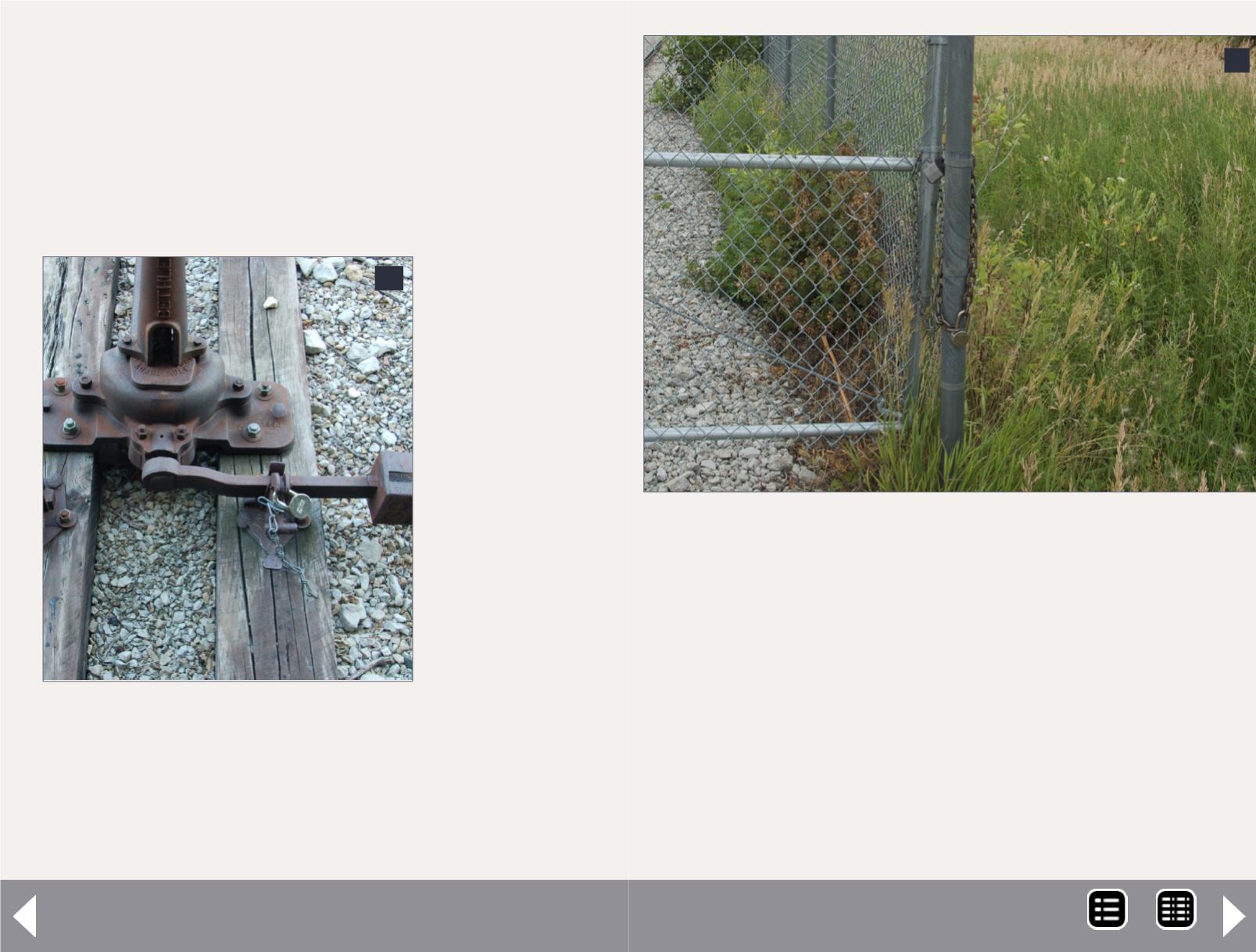
Under Lock and Key
On prototype railroads, the train crew carries a railroad key to
access locked equipment along the line. These locks are owned
and installed by the railroad to prevent unauthorized access to
their equipment. Locks are generally placed on every switch
that is not under direct dispatcher control, such as powered
switches in a CTC OS section.
To throw a
switch, the con-
ductor must
unlock a large
padlock and
remove it from
the switch stand
to allow the han-
dle to be thrown
and the points
to move. Once
the crew is done
using the switch,
the points are
returned to their
normal position
and the switch
is relocked.
When trains
are switching
an industry, the
switch is gener-
ally left unlocked
until the work is
complete.
Fence gates on industry spurs are also protected by lock and
key. Copies of the keys are usually given to both the customer
and the railroad, so that crews can access and switch the spur
without needing to call the customer to open the gate. Just as
is the case with turnouts, the gates are generally left unlocked
while the train is working the industry.
Locks can extend to other railroad equipment. Derails are
secured with the same type of padlocks that are used on
2: The lock is clearly visible on the
switch stand along the prototype
IAIS Grimes Line. Train crews
must unlock and remove the
padlock before the switch can be
thrown.
2
3: The same style of lock is use on fence gates at
industrial spurs. The locks are usually owned by the
railroad, so they can open the gate without needing the
customer to do so.
3
Locking up your layout - 2
MRH-Dec 2013


